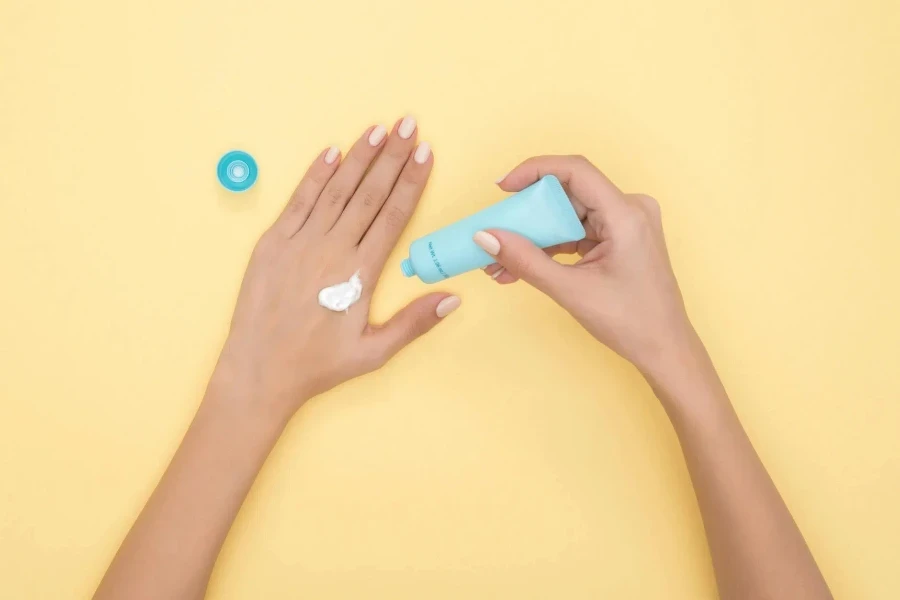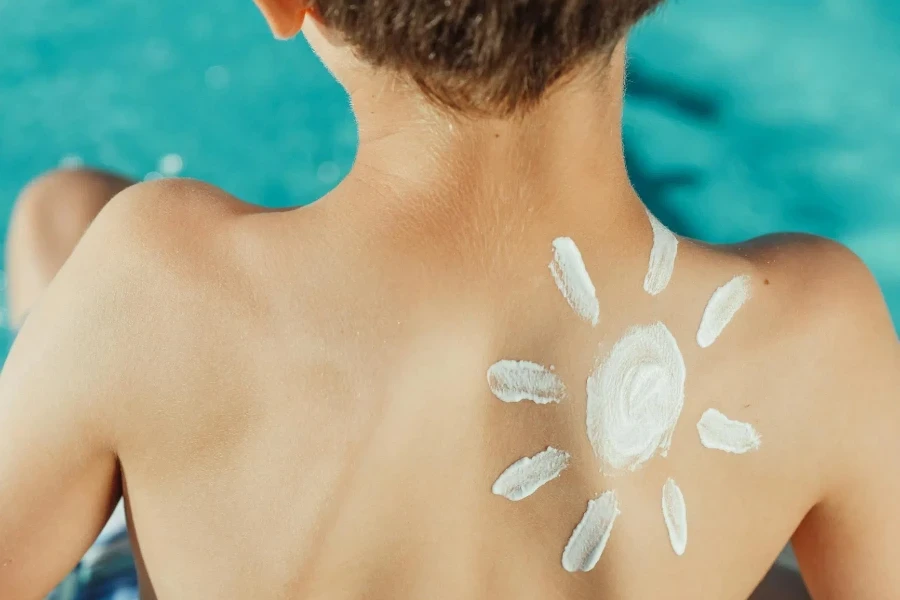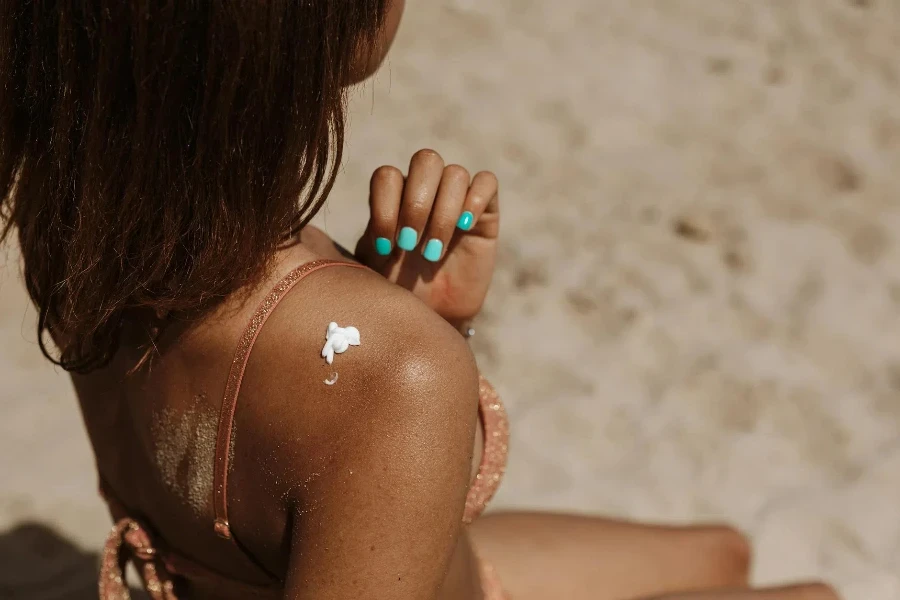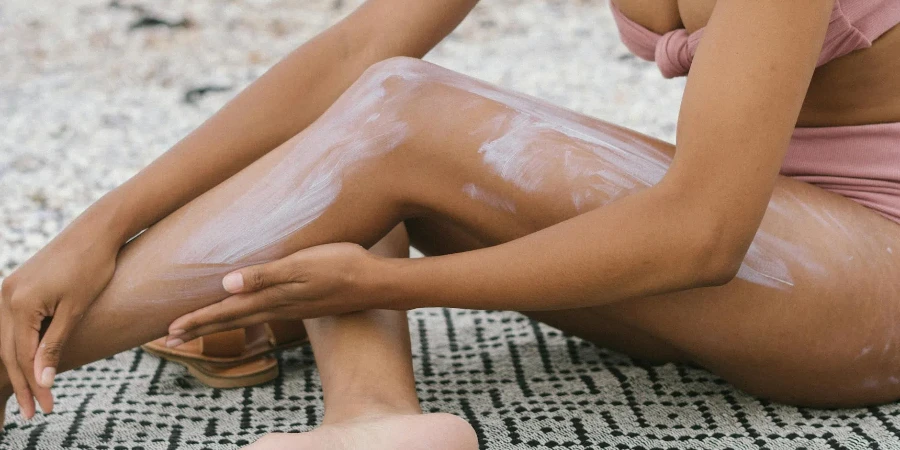In the ever-evolving landscape of beauty and personal care, reef safe sunscreen has emerged as a pivotal product, capturing the attention of environmentally conscious consumers and businesses alike. As the world becomes increasingly aware of the impact of traditional sunscreens on marine ecosystems, the demand for reef safe alternatives is on the rise. This guide delves into the essence of reef safe sunscreen, its market potential, and the driving forces behind its growing popularity.
Table of Contents:
– Understanding Reef Safe Sunscreen and Its Market Potential
– Exploring Popular Types of Reef Safe Sunscreen
– Addressing Consumer Pain Points and Offering Solutions
– Innovations and New Products in the Reef Safe Sunscreen Market
– Essential Factors to Consider When Sourcing Reef Safe Sunscreen
– Wrapping Up: Key Takeaways for Sourcing Reef Safe Sunscreen
Understanding Reef Safe Sunscreen and Its Market Potential

Defining Reef Safe Sunscreen: What It Is and Why It Matters
Reef safe sunscreen refers to sun protection products formulated without harmful chemicals like oxybenzone and octinoxate, which are known to cause coral bleaching and damage marine life. These sunscreens typically use mineral-based ingredients such as zinc oxide and titanium dioxide, which provide effective UV protection without compromising the health of coral reefs. The significance of reef safe sunscreen extends beyond environmental preservation; it also aligns with the increasing consumer preference for clean and natural beauty products.
Social Media Trends and Hashtags Driving Demand
The rise of social media has played a crucial role in amplifying the demand for reef safe sunscreen. Hashtags like #ReefSafe, #EcoFriendlyBeauty, and #SaveTheReefs have gained traction, fostering a community of eco-conscious consumers who prioritize sustainable choices. Influencers and environmental advocates are leveraging these platforms to educate their followers about the detrimental effects of conventional sunscreens on marine ecosystems, further propelling the shift towards reef safe alternatives. This digital movement not only raises awareness but also drives sales, as consumers seek products that align with their values.
Aligning with Broader Environmental and Health Trends
The growing awareness of environmental issues and the push for sustainable living have significantly influenced consumer behavior. Reef safe sunscreen fits seamlessly into broader trends such as clean beauty, green living, and health-conscious lifestyles. According to a professional report, the global sunscreen market is projected to grow at a CAGR of 5.28%, reaching $16.204 billion by 2029. This growth is fueled by the increasing prevalence of skin cancer and other UV-related skin conditions, which underscores the importance of effective sun protection. Additionally, the aging population and the rise in outdoor activities contribute to the heightened demand for sunscreen products.
The alignment of reef safe sunscreen with these overarching trends presents a lucrative opportunity for businesses in the beauty and personal care industry. By offering products that cater to the eco-conscious consumer, companies can tap into a growing market segment that values sustainability and health. As the market for sun care products continues to expand, the emphasis on reef safe formulations is expected to become even more pronounced, driving innovation and growth in this sector.
Exploring Popular Types of Reef Safe Sunscreen

Mineral-Based Sunscreens: Pros, Cons, and Consumer Feedback
Mineral-based sunscreens, also known as physical sunscreens, utilize active mineral ingredients like zinc oxide and titanium dioxide to create a physical barrier on the skin that reflects UV rays. These sunscreens are highly regarded for their broad-spectrum protection and are often recommended for sensitive skin due to their non-irritating properties. According to a professional report, the global shift towards clean beauty has significantly boosted the popularity of mineral-based sunscreens, as they are free from harmful chemicals like oxybenzone and octinoxate, which are known to damage coral reefs.
However, mineral sunscreens are not without their drawbacks. One common complaint is the white cast they can leave on the skin, which can be particularly noticeable on darker skin tones. Innovations in formulation, such as micronized particles and tinted versions, are addressing this issue, making these products more appealing to a broader audience. Consumer feedback highlights a growing preference for these improved formulations, which offer the same level of protection without the undesirable aesthetic effects.
Consumer feedback has been largely positive, especially among those with sensitive skin or those looking for eco-friendly options. Brands like Blue Lizard and Badger have received praise for their effective and gentle formulations. Business buyers should consider the increasing demand for mineral-based sunscreens, particularly those that have addressed the white cast issue, to meet the evolving preferences of their customers.
Biodegradable Sunscreens: Effectiveness and Market Reception
Biodegradable sunscreens are designed to break down naturally in the environment, reducing their impact on marine ecosystems. These sunscreens typically avoid ingredients that are harmful to coral reefs and marine life, such as oxybenzone and octinoxate. Instead, they use natural and organic ingredients that are safe for both the skin and the environment. According to a report by a leading industry analyst, the market for biodegradable sunscreens is expanding rapidly, driven by increased consumer awareness and regulatory changes in key markets.
The effectiveness of biodegradable sunscreens has been a topic of much discussion. While some early formulations were criticized for being less effective than their chemical counterparts, recent advancements have significantly improved their performance. Brands like Stream2Sea and Raw Elements have developed biodegradable sunscreens that offer robust UV protection while being gentle on the environment. Market reception has been overwhelmingly positive, with consumers appreciating the dual benefits of skin protection and environmental conservation.
For business buyers, sourcing biodegradable sunscreens can be a strategic move to cater to eco-conscious consumers. Ensuring that these products meet high standards of effectiveness and safety is crucial. Collaborating with suppliers who prioritize ingredient transparency and certification can help build trust and loyalty among environmentally aware customers.
Hybrid Formulations: Balancing Protection and Environmental Impact
Hybrid sunscreens combine the best of both mineral and chemical sunscreens, offering broad-spectrum protection while minimizing environmental impact. These formulations often use a mix of mineral and safe chemical UV filters to achieve a balance between efficacy and user experience. According to industry experts, hybrid sunscreens are gaining traction as they address the limitations of both mineral and chemical sunscreens, such as the white cast of mineral sunscreens and the potential environmental harm of chemical sunscreens.
One of the key advantages of hybrid formulations is their ability to provide high SPF protection without compromising on texture and application. Brands like Supergoop! and Coola have successfully launched hybrid sunscreens that are lightweight, non-greasy, and easy to apply. These products have been well-received by consumers who seek effective sun protection without the drawbacks associated with traditional formulations.
For business buyers, hybrid sunscreens represent an opportunity to offer innovative products that meet diverse consumer needs. By sourcing from reputable suppliers who adhere to strict environmental and safety standards, businesses can ensure they provide high-quality products that appeal to a broad customer base.
Addressing Consumer Pain Points and Offering Solutions

Common Concerns: Skin Sensitivity and Allergic Reactions
Skin sensitivity and allergic reactions are common concerns among sunscreen users. Many consumers experience irritation or breakouts when using certain sunscreens, particularly those with chemical UV filters or fragrances. According to dermatological studies, mineral-based sunscreens are generally better tolerated by sensitive skin due to their inert ingredients. Brands like La Roche-Posay and Aveeno have developed formulations specifically designed for sensitive skin, incorporating soothing ingredients like niacinamide and colloidal oatmeal.
To address these concerns, business buyers should prioritize sourcing sunscreens that are hypoallergenic, fragrance-free, and tested for sensitive skin. Partnering with suppliers who provide detailed ingredient lists and clinical testing data can help ensure the safety and efficacy of the products offered to consumers.
Tackling the White Cast Issue: Innovations and Alternatives
The white cast left by mineral sunscreens has been a significant barrier to their widespread adoption, particularly among individuals with darker skin tones. Innovations in formulation, such as the use of micronized or nano-sized zinc oxide and titanium dioxide, have helped reduce the visibility of the white cast. Additionally, tinted sunscreens that blend with various skin tones have become increasingly popular.
Brands like EltaMD and Black Girl Sunscreen have successfully addressed the white cast issue with their innovative products. For business buyers, offering a range of tinted and non-tinted mineral sunscreens can cater to a diverse customer base, ensuring that all consumers can find a product that suits their skin tone and preferences.
Ensuring Broad-Spectrum Protection: Key Ingredients to Look For
Broad-spectrum protection is essential for shielding the skin from both UVA and UVB rays, which can cause sunburn, premature aging, and skin cancer. Key ingredients to look for in broad-spectrum sunscreens include zinc oxide, titanium dioxide, avobenzone, and octocrylene. According to a professional report, formulations that combine these ingredients can provide comprehensive protection against the harmful effects of UV radiation.
Business buyers should ensure that the sunscreens they source are labeled as broad-spectrum and contain effective UV filters. Collaborating with suppliers who prioritize ingredient transparency and adhere to regulatory standards can help guarantee the quality and safety of the products offered to consumers.
Innovations and New Products in the Reef Safe Sunscreen Market

Breakthrough Formulations: What’s New and Exciting
The reef safe sunscreen market has seen several breakthrough formulations that combine efficacy with environmental responsibility. Innovations such as water-resistant biodegradable sunscreens and hybrid formulations that offer high SPF protection without harmful chemicals are gaining popularity. Brands like Thinksport and All Good have introduced products that cater to the growing demand for effective and eco-friendly sun protection.
For business buyers, staying updated on the latest innovations and incorporating these cutting-edge products into their offerings can provide a competitive edge. Partnering with forward-thinking suppliers who invest in research and development can help businesses stay ahead of market trends.
Packaging Innovations: Eco-Friendly and Convenient Options
Eco-friendly packaging is becoming a crucial aspect of the reef safe sunscreen market. Consumers are increasingly looking for products that minimize environmental impact not only through their formulations but also through their packaging. Innovations such as recyclable, biodegradable, and refillable packaging are gaining traction. Brands like Ethique and Plaine Products have set new standards with their sustainable packaging solutions.
Business buyers should consider sourcing sunscreens that come in eco-friendly packaging to appeal to environmentally conscious consumers. Collaborating with suppliers who prioritize sustainability in their packaging can enhance a brand’s reputation and attract a loyal customer base.
Emerging Brands to Watch: Who’s Leading the Charge
Several emerging brands are making significant strides in the reef safe sunscreen market. These brands are not only focusing on creating effective and environmentally friendly products but also on educating consumers about the importance of reef safe sunscreens. Brands like Raw Elements and Stream2Sea are leading the charge with their innovative formulations and commitment to sustainability.
For business buyers, keeping an eye on these emerging brands and incorporating their products into their inventory can help meet the growing demand for reef safe sunscreens. Partnering with these brands can also provide opportunities for co-branding and collaborative marketing efforts.
Essential Factors to Consider When Sourcing Reef Safe Sunscreen

Ingredient Transparency and Certification Standards
Ingredient transparency is a critical factor for consumers when choosing reef safe sunscreens. Business buyers should prioritize sourcing products from suppliers who provide detailed ingredient lists and adhere to certification standards such as the Environmental Working Group (EWG) verification or the MyMicrobiome certification. According to industry experts, certifications can help build consumer trust and ensure the safety and efficacy of the products.
Ensuring that suppliers comply with regulatory standards and provide transparent information about their ingredients can help business buyers offer high-quality products that meet consumer expectations. Collaborating with suppliers who prioritize ingredient transparency can also enhance a brand’s reputation for safety and reliability.
Evaluating Supplier Reliability and Ethical Practices
Supplier reliability and ethical practices are essential considerations when sourcing reef safe sunscreens. Business buyers should evaluate potential suppliers based on their track record, production capabilities, and commitment to ethical practices. According to a professional report, partnering with suppliers who adhere to fair labor practices and environmental sustainability can help ensure a consistent supply of high-quality products.
Conducting thorough due diligence and establishing long-term relationships with reliable suppliers can help business buyers maintain a steady inventory of reef safe sunscreens. Collaborating with suppliers who prioritize ethical practices can also enhance a brand’s reputation and appeal to socially conscious consumers.
Cost-Effectiveness and Bulk Purchasing Options
Cost-effectiveness is a crucial factor for business buyers when sourcing reef safe sunscreens. Purchasing in bulk can help reduce costs and ensure a steady supply of products. According to industry analysts, negotiating favorable terms with suppliers and exploring bulk purchasing options can help businesses achieve cost savings and improve their profit margins.
Business buyers should consider working with suppliers who offer competitive pricing and flexible purchasing options. Establishing long-term contracts and leveraging bulk purchasing can help businesses secure better deals and maintain a consistent supply of reef safe sunscreens.
Wrapping Up: Key Takeaways for Sourcing Reef Safe Sunscreen
In conclusion, sourcing reef safe sunscreens requires careful consideration of various factors, including ingredient transparency, supplier reliability, and cost-effectiveness. By staying updated on market trends and innovations, business buyers can offer high-quality products that meet consumer demands for effective and environmentally friendly sun protection. Partnering with reputable suppliers and prioritizing sustainability can help businesses build trust and loyalty among their customers, ensuring long-term success in the competitive sunscreen market.





 বাংলা
বাংলা Nederlands
Nederlands English
English Français
Français Deutsch
Deutsch हिन्दी
हिन्दी Bahasa Indonesia
Bahasa Indonesia Italiano
Italiano 日本語
日本語 한국어
한국어 Bahasa Melayu
Bahasa Melayu മലയാളം
മലയാളം پښتو
پښتو فارسی
فارسی Polski
Polski Português
Português Русский
Русский Español
Español Kiswahili
Kiswahili ไทย
ไทย Türkçe
Türkçe اردو
اردو Tiếng Việt
Tiếng Việt isiXhosa
isiXhosa Zulu
Zulu